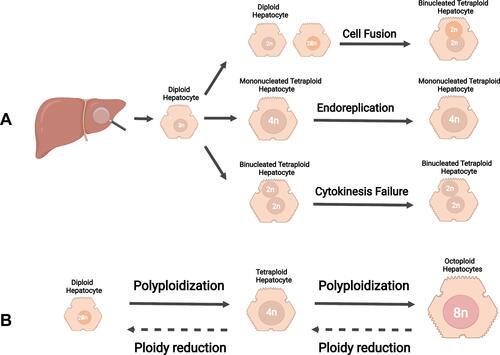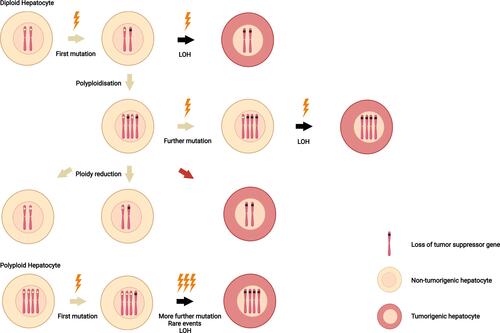Figures & data
Figure 1 Mechanisms of polyploidization in the liver. (A) The formation of polyploid hepatocytes mainly follows the three classic mechanisms: cell fusion, endoreplication, and cytokinesis failure. (B) Ploidy in hepatocytes is well balanced by the “ploidy conveyor”. Diploid hepatocytes can generate tetraploid hepatocyte via polyploidization. Similarly, octoploid hepatocytes can give rise to tetraploid hepatocytes via ploidy reduction.

Figure 2 Ploidy and loss of heterozygosity. Compared with diploid hepatocytes, polyploid hepatocytes prevent tumor initiation through the possession of multiple copies of each chromosome. After first mutations (lightning) occur, the remaining wild-type alleles in polyploid hepatocytes provide additional tumor suppressor gene copies. In diploid cells, by contrast, a second mutation give rise to loss of heterozygosity. In addition, unexpected reduction of hepatocyte ploidy (red arrow) may have a undesirable consequence, leading to carcinogenesis.

